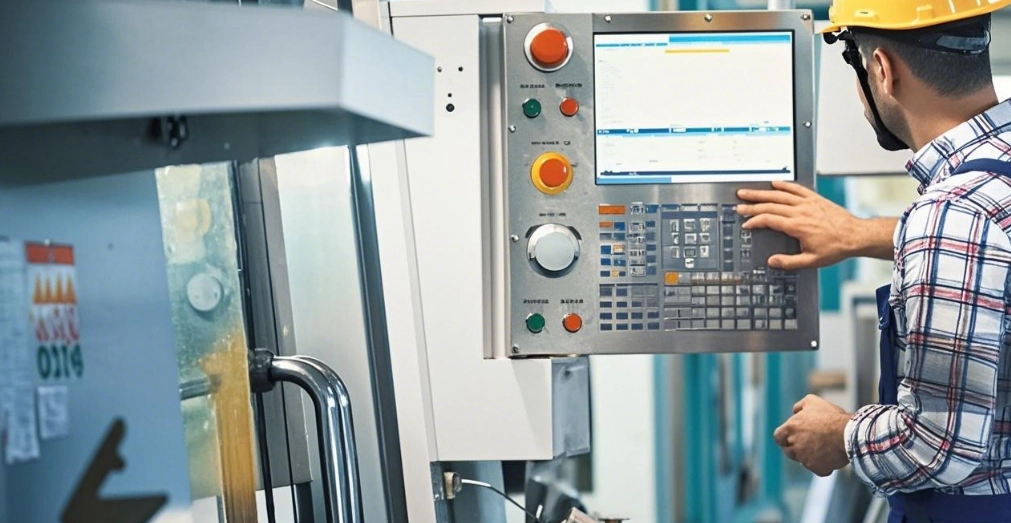Industrial environments are tough. From sweltering heat inside factories to freezing outdoor installations, and from constant mechanical vibrations to sudden shocks, display technology faces challenges most consumer screens could never survive. That’s where Industrial LCD Panels step in. Built for resilience, precision, and long service life, they keep operations running smoothly even under the harshest conditions.
In this guide, we’ll explore exactly how these rugged panels manage extreme temperatures and relentless vibrations without compromising on clarity or reliability.
Why Durability Matters in Industrial Displays
Unlike commercial screens, which operate in climate-controlled spaces, Industrial LCD Panels are deployed in unpredictable conditions. Think of oil rigs, military vehicles, factory automation lines, mining equipment, or outdoor kiosks.
Here, downtime means lost productivity or even safety risks. That’s why durability isn’t just a feature — it’s essential.
- Heat resistance keeps displays readable in hot environments.
- Cold tolerance ensures performance outdoors in freezing climates.
- Shock and vibration resistance prevents system failures in heavy machinery.
Engineering for Extreme Temperatures
One of the biggest challenges is thermal management. Consumer LCDs typically operate between 0°C and 40°C. But industrial models often need to function reliably from –30°C up to +85°C.
🔹 Wide Temperature Components
Industrial displays use specially selected liquid crystals, backlight modules, and driver ICs that remain stable across wide ranges. This prevents issues like slow response time in the cold or blackouts in heat.
🔹 Advanced Backlighting
LED backlights are engineered with temperature-compensating circuits, ensuring brightness and uniformity remain consistent even as conditions fluctuate.
🔹 Intelligent Thermal Design
Heat sinks, cooling fans, or conduction plates are often integrated into the panel housing. These dissipate excess heat efficiently, preventing damage to sensitive electronics.
Tackling Vibrations and Shock
Factories, military vehicles, and heavy construction sites expose electronics to constant shaking. A consumer LCD in this environment wouldn’t last a week. Industrial displays are different.
🔹 Reinforced Structures
The mechanical housing of Industrial LCD Panels is built from heavy-duty materials like steel or aluminum alloys, protecting delicate components inside.
🔹 Shock-Resistant Mounting
Internal circuit boards and LCD glass are mounted with shock-absorbing materials to minimize damage from sudden jolts.
🔹 Vibration Testing
Before reaching the market, industrial panels undergo MIL-STD-810 or IEC vibration tests, simulating years of use in rugged environments.
Long-Term Reliability in Harsh Conditions
Survival isn’t enough — these displays must perform consistently. Engineers focus on:
- Anti-glare coatings for readability in bright sunlight.
- Conformal coating on circuit boards to resist dust and moisture.
- Industrial-grade connectors designed to withstand repeated vibrations without loosening.
- Extended lifecycle components, ensuring the panel remains operational for 5–10+ years.
Industries That Rely on Rugged Displays
The resilience of Industrial LCD Panels makes them indispensable across sectors:
- Manufacturing automation – displays in production lines run 24/7.
- Transportation – used in trains, buses, and airplanes.
- Military & defense – field-deployed panels survive combat conditions.
- Energy & mining – withstand heat, dust, and vibrations from drilling machinery.
- Marine environments – salt, humidity, and shocks demand ruggedness.
Each use case highlights why ordinary consumer-grade displays are simply not an option.
Why Businesses Choose Industrial LCD Panels
Investing in rugged displays may cost more upfront, but the long-term benefits outweigh the price difference:
- Reduced downtime from display failures.
- Longer lifespan, lowering replacement costs.
- Consistent performance, even in extreme conditions.
- Improved safety, since operators can always rely on critical data visibility.
If you’re evaluating solutions for your business, providers like Rackmount Sales specialize in delivering high-performance Industrial LCD Panels engineered for reliability in the harshest environments.
Key Design Innovations That Make the Difference
Modern rugged displays aren’t just stronger versions of consumer screens — they’re purpose-built.
- High-Brightness Options – readable under direct sunlight.
- Touchscreens with Glove Support – essential in industrial settings.
- EMI Shielding – prevents interference from surrounding heavy equipment.
- Customizable Enclosures – tailored to fit different mounting environments.
- IP-Rated Protection – ensuring resistance against dust and water ingress.
These innovations bridge the gap between usability and durability.
Final Thoughts
Harsh environments demand more than just ordinary displays. Industrial LCD Panels stand out because they’re built to thrive under pressure — from scorching heat to icy cold, and from endless vibrations to sudden shocks. Their rugged engineering ensures clear, reliable performance where it matters most.
For businesses that need displays to work without compromise, these panels are not just a choice — they’re a necessity.
❓ FAQ – People Also Ask
Q1. What temperature range can Industrial LCD Panels handle?
Most can operate from –30°C to +85°C, far beyond consumer-grade limits.
Q2. How do Industrial LCD Panels resist vibrations?
They use reinforced housings, shock-absorbing mounts, and undergo strict vibration testing.
Q3. Can Industrial LCD Panels be used outdoors?
Yes. With high-brightness displays, anti-glare coatings, and weatherproof housings, they’re ideal for outdoor use.
Q4. Why are Industrial LCD Panels more expensive than consumer displays?
They’re built with industrial-grade components, tested for harsh conditions, and designed to last years longer, making them more cost-effective over time.
Q5. Where can I buy reliable Industrial LCD Panels?
Specialized suppliers like Rackmount Sales provide rugged, customizable options for various industries.

